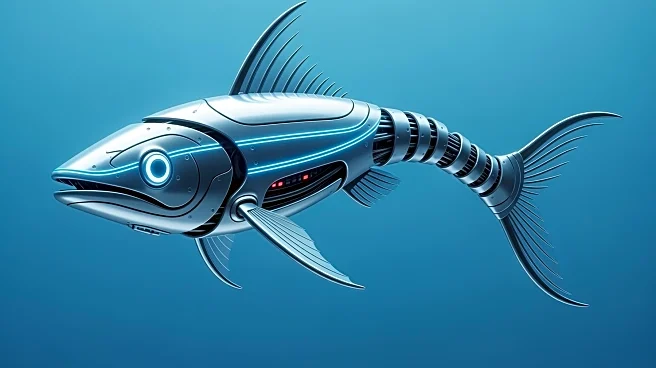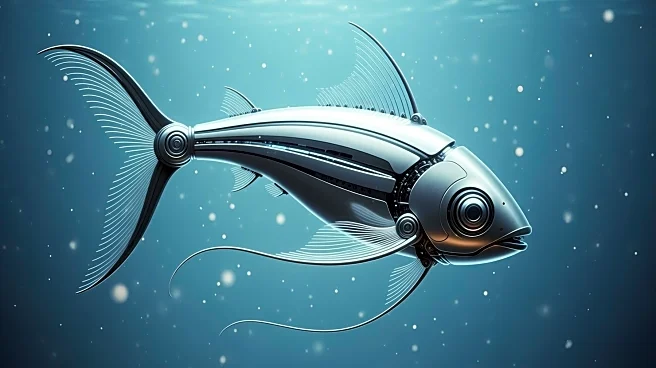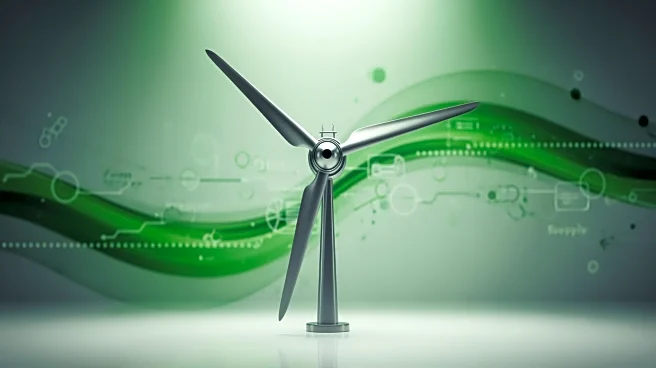What's Happening?
Researchers in China have developed a robotic fish equipped with a flexible electromagnetic fin, designed to mimic the agility and efficiency of real fish. Led by Fanghao Zhou at Zhejiang University, the team
created a fin that uses electromagnetic coils and spherical magnets to generate thrust, allowing the robot to swim at speeds of 405 millimeters per second and turn with a radius of 0.86 body lengths. This innovation combines the strength of traditional motor-powered fins with the flexibility of soft actuators, aiming to replicate the natural movement of fish. The robotic system is lightweight and powerful, though it currently consumes a significant amount of energy.
Why It's Important?
This development in robotic fish technology has potential applications in underwater exploration, ecological monitoring, and inspection tasks. The ability to mimic fish-like movements could enable robots to interact safely with marine environments, such as coral reefs, without causing damage. The research also contributes to advancements in soft robotics, offering insights into creating compact and efficient actuators. As the technology evolves, it could lead to more autonomous underwater platforms, enhancing capabilities in scientific research and environmental conservation.
What's Next?
The research team plans to explore multi-fin coordinated motion to achieve more lifelike swimming behaviors. Efforts will also focus on improving energy efficiency and extending the operational time of the robotic fish. Further miniaturization of the system is anticipated, which could lead to smaller autonomous underwater platforms. These advancements may open new avenues for the use of robotic fish in various industries, including environmental monitoring and marine research.
Beyond the Headlines
The development of robotic fish with flexible electromagnetic fins highlights the intersection of engineering and biology, offering a glimpse into the future of biomimetic robotics. This technology could pave the way for more sustainable and efficient underwater exploration methods, reducing the need for human intervention in delicate marine ecosystems. Additionally, the research underscores the importance of energy efficiency in robotics, prompting further investigation into sustainable power solutions for autonomous systems.












